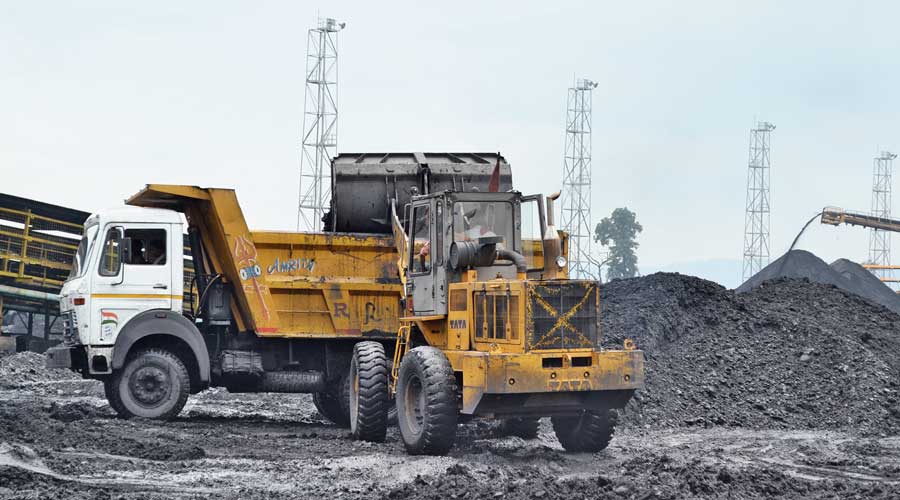The Centre plans to build a domestic thermal coal stock of 1.8-2.5 billion tonnes (bt) by 2030-32, following which it intends to hit the pause button on production for the next decade. This transition plan is despite India not signing any global agreement on the phasing down of coal production and its usage.
According to the projections of the Ministry of Coal, the demand for coal will be close to 1.5-1.8 bt by 2030. Officials said that a buffer stock of over the estimated 0.5-1 bt is being planned to take care of any sudden demand fluctuations. The ministry is also factoring if renewable energy (RE) sources are unable to meet the electricity demand.
“Even if RE touches the targeted 500 gigawatts (gw) by 2030, the base energy source would be required. It was earlier estimated that 1.5 bt of coal would be able to meet the projected electricity demand of 350 gw by the end of this decade. But since this year has bucked all demand projections, as a country we should build surplus capacity,” a senior official in the coal ministry said.
This year, the peak power demand touched 240 gw. Sources said the ministry is expecting close to 30 per cent of coal production contribution to come from privately owned captive and commercial mines. In November this year, the Ministry of Coal said in a public statement that it is planning to build 1.4 bt of coal stock by 2027 and 1.5 bt by 2030.
However, officials now indicate that a “readily available coal stock” from 2030 to 2040 is being planned.
The plan has also been tweaked as various states are now going back to building new ones or expanding the existing thermal power units to cater to the unexpectedly rising power demand. Around half a dozen states are planning new thermal power units of around 15 gw, the Business Standard reported recently. The spokesperson of the coal ministry did not respond to emailed queries on the proposed plan. With the surplus capacity by the end of this decade, the ministry is hopeful that coal production can be paused by then.
“Till 2040, there will be more than enough coal supply. It is expected that RE will be able to surpass thermal capacity and cheap energy storage solutions to support the same. Even if not, the coal production can be scaled up by Coal India Ltd (CIL),” a senior official said.
India’s coal production is expected to touch 1 bt by the end of this current fiscal, Union Coal and Mines Minister Pralhad Joshi said recently.
“This year, we are going to cross one billion tonnes in production. The demand for electricity by 2030 is going to double and to cater to the needs, the country needs coal,” Joshi had said on December 21.
While the majority of coal supply would come from the national miner CIL, the ministry is hopeful that the private sector would also contribute significantly through the captive and commercial coal blocks owned by them. Officials said the current plan makes business sense and ensures energy security. At the recently concluded COP28, the Indian delegation led by the Ministry of Environment, Forest and Climate Change (MoEFCC) did not commit to the phasing down of coal production and usage.
India did not sign up for the tripling of renewable energy as it entailed transitioning away from coal. At global climate platforms, India has always maintained that it will not reduce its fossil fuel needs in the medium term citing energy security. The country has also cited its green energy plans under the energy transition.










